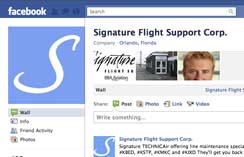Milton on my Mind
In 1982 I attended the Aspen International Design conference with a small cadre of WSU professors and students, and we all stayed in a big house. To my delight I arrived only to discover that one of my housemates was none other than the famous designer and my hero, Milton Glaser. For me it was like meeting John Lennon, or Frida Kahlo. WOW. My eyeballs about popped out of my head when I spotted this icon of design. Of course, I’d studied his work throughout college, drooled over the infamous Bob Dylan album cover that defined the ’60s psychedelic art style, and had total admiration for this illustrator/designer/thinking man. Being the shy demure art student, I ended up sitting smack dab next to him at dinner. I wanted more insight into the man and he did not disappoint with his charisma and verbal dexterity. He could turn a phrase, help you see the truth, and share his passion. I was mesmerized by his stories about creating the “I heart New York” ad campaign, and never receiving one dime of profit. Can you imagine how much he would be worth if he had retained reproduction rights to the most famous, long-lived campaign of all time?
Form and Light
I recently returned from NYC and 40 years later his simple catchy heart mark still commands respect and remains mass produced in merchandize mecca. After having the documentary “Milton Glaser: To Inform and Delight” in my Netflix queue for almost two years, I was surprised to see it appear at our home directly upon my return from the city he loves so much. Talk about perfect timing. This film revisits my graphic design awakening with drawing, painting, logo, prints, posters and his editorial work creating New York magazine. While working in a wide range of design disciplines, Milton early on recognized the benefits of specialization. His vertical market was primarily the food industry. Ours: aviation.
Creating Something New
Milton believes in a small-studio atmosphere where he’s intimately involved in the day-to-day work, arriving at his office and working side by side with his small but powerful team. I understand his joy in the doing the work and share his philosophy. Nothing gives me more pleasure than practicing my trade, solving problems, and creating art and copy with a group of people I enjoy. Milton and I agree there’s nothing better than working in the community for the public good, creating ideas that last longer than you. His motto and mine: do good work.
And, by the way, my husband groaned when he pulled the film from the Netfix sleeve, but he was quickly drawn in and came away amazed by the impact Milton’s design continues to make on the world.
